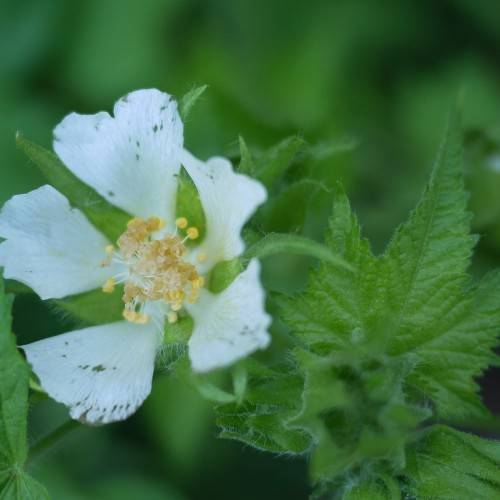
Russian hibiscus
Kitaibelia vitifolia
Cycle:
Herbaceous Perennial
Watering:
Average
Hardiness Zone:
5 - 8
Flowers:
Flowers
Sun:
Full sun,part shade
Leaf:
Yes
Growth Rate:
Low
Maintenance:
Low
Drought Tolerant:
Yes
Salt Tolerant:
Yes
Invasive:
Yes
watering
Russian Hibiscus (Kitaibelia vitifolia) should be watered deeply but not too frequently. During the growing season, water once a week, ensuring the soil becomes thoroughly moist. In the winter months, reduce watering to approximately once a month. Water first thing in the morning or in the evening when temperatures are cooler to ensure the water can be absorbed by the plant before evaporating. But make sure not to let the soil dry out completely. Too much water can cause root rot, so allow the top 2-3 inches of soil to dry out before watering again.
sunlight
Russian hibiscus (Kitaibelia vitifolia) prefers sunny locations and should receive at least 6 hours of full sunlight daily. It grows best in moist soils with temperatures between 60 and 75 degrees Fahrenheit. An ideal location for these plants would be in an area with morning sun, followed by light shade in the afternoon. During the winter months, when the amount of sunlight is shorter, Russian hibiscus can survive with only a few hours of sunlight.
pruning
Pruning is essential for a healthy Russian hibiscus (Kitaibelia vitifolia). Pruning should take place twice a year, once in early spring and once in late summer. The timing of pruning is important to ensure the proper growth of the plant. In early spring, the Russian hibiscus should be pruned when it is actively growing. This encourages new and healthy growth, and encourages branching. Remove dead flowers and dead woody stems. When pruning in early spring, only remove approximately 1/4 of the total number of branches. In late summer, the Russian Hibiscus should also be pruned to encourage a bushier growth and better blooming. Prune lightly but often, as the Russian hibiscus naturally grows vigorously during the summer months. This helps ensure an even distribution of nutrients throughout the plant and stimulates blooming for the upcoming season. Prune just enough so the plant retains its shape. By cutting away old flowers, removing any dead or wilted foliage, and pruning lightly throughout the year, a Russian hibiscus will remain healthy and attractive.
